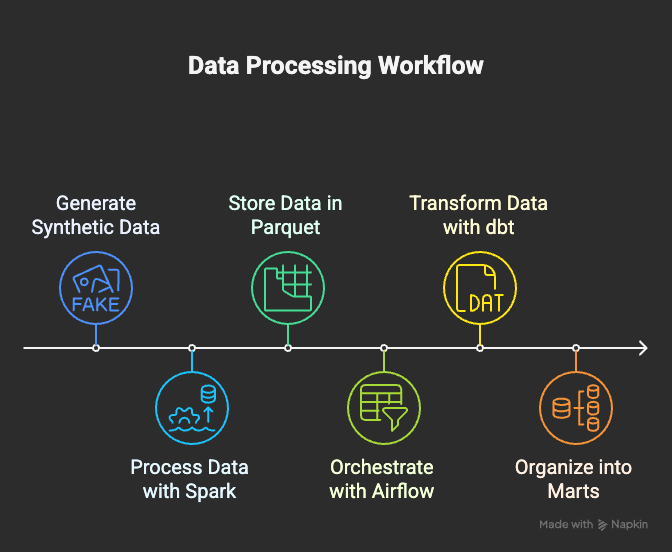
🎯 Batch Pipeline for Transaction Data
Imagine: K-pop demon hunters launches a fintech startup for the fans.
Now they have to deal with millions of credit card transactions every day — and they need to make sense of them.
Those transactions power everything from:
- Fraud detection → catch suspicious transactions fast.
- Customer insights → build RFM segments, calculate lifetime value.
- Regulatory reporting → produce accurate, auditable data for the authorities.
- Marketing & product analytics → serve the right offer to the right customer at the right time.
Without a reliable pipeline, data ends up late, messy, duplicated — which means money lost, compliance risk, and very unhappy customers.
🛠️ The Modular Approach
I wanted to build a production-style ETL pipeline that is reproducible, cloud-ready, and analytics-friendly.
But I quickly realized this is a big project — and trying to do everything at once would be a nightmare.
So I broke it into modular milestones (M0 → M4):
- M0 — Core: ingest → clean → partition (local only)
- M1 — Orchestration: Airflow DAG with daily schedule + backfill
- M2 — Modeling: dbt staging/facts/marts (DuckDB local)
- M3 — Cloud: swap to AWS (S3 + Redshift)
- M4 — Governance: data quality, lineage, dashboards
This modular setup keeps the project maintainable and shows clear progress
🚦 M0 — Core Data Pipeline (Local)
Using Faker, I generated ~5,000 synthetic transactions per day for 11 days (Sept 1–11).
Each row looks resembles a real credit card swipe:
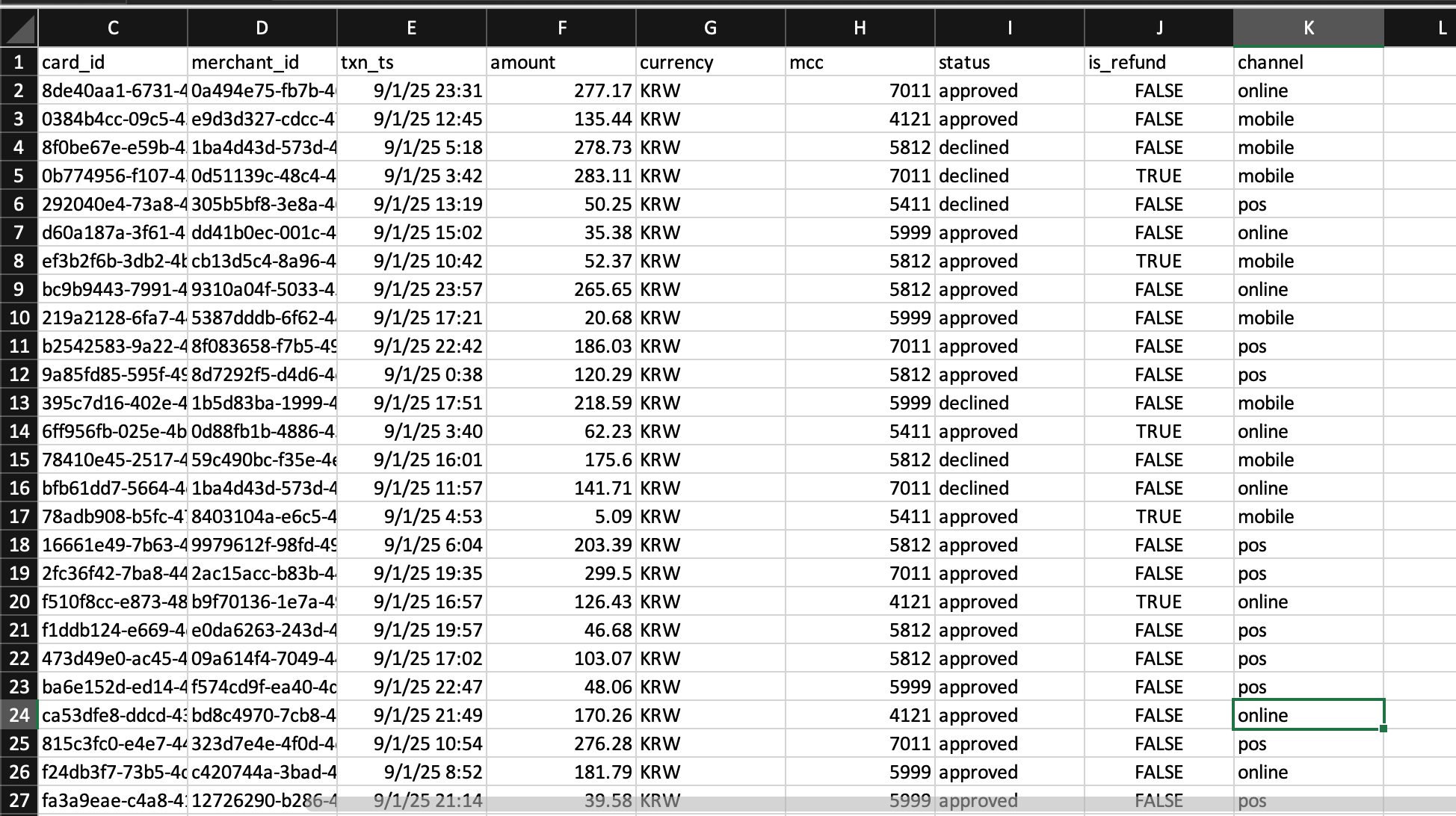
transaction_id | customer_id | card_id | merchant_id | txn_ts | amount | currency | mcc | status | is_refund | channel
- mcc: Merchant Category Code (4-digit number assigned by card networks)
- channel: online, POS, or mobile
I deliberately injected duplicates and late arrivals to simulate messy reality.
Then, I wrote a PySpark job (running in Docker) to:
- Deduplicate by
transaction_id(latest record wins) - Late data handled (upserted) and re-partitioned by event date
- Write partitioned Parquet files to:
silver/transactions/year=YYYY/month=MM/day=DD
✅ Result: Clean, partitioned Parquet data with <0.001% duplicate rate — ready for analytics.
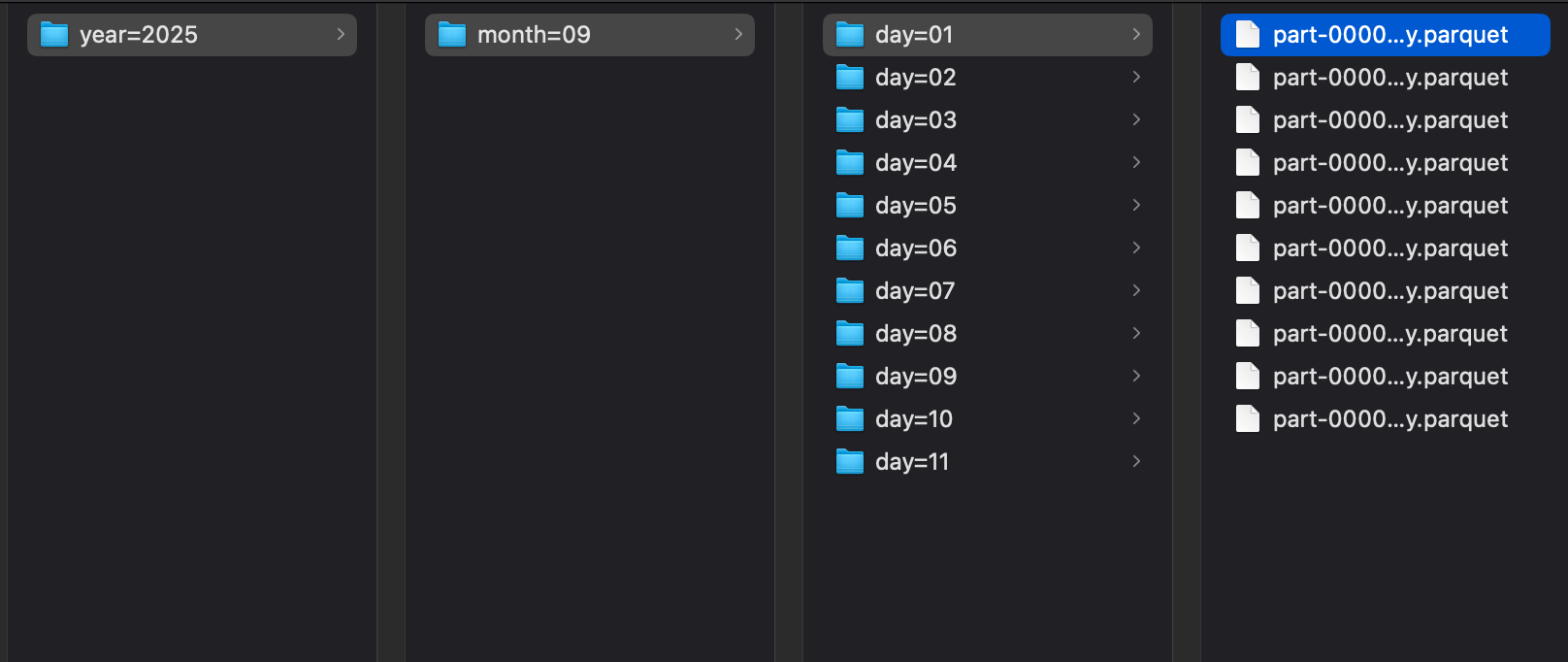
⏰ M1 — Orchestration with Airflow
Having clean data is nice, but I don’t want to run it manually every day. Enter Airflow (in Docker).
I built a simple DAG and add on dbt
seed_for_day → spark_clean_for_day → dbt_run

Key features:
- Daily schedule: runs at 06:00 AM, guaranteed to finish before 08:00
- Backfills: one command to reprocess past dates
- Retries: automatic retries for transient errors
✅ Result: A pipeline that can meet SLAs (timely data delivery), with automatic retries and backfills.
📊 M2 — Modeling with dbt (DuckDB Local)
Next, I needed analytics-friendly tables so business teams can actually use the data. This is where dbt comes in.
I built a dbt project (pointing to DuckDB locally) with:
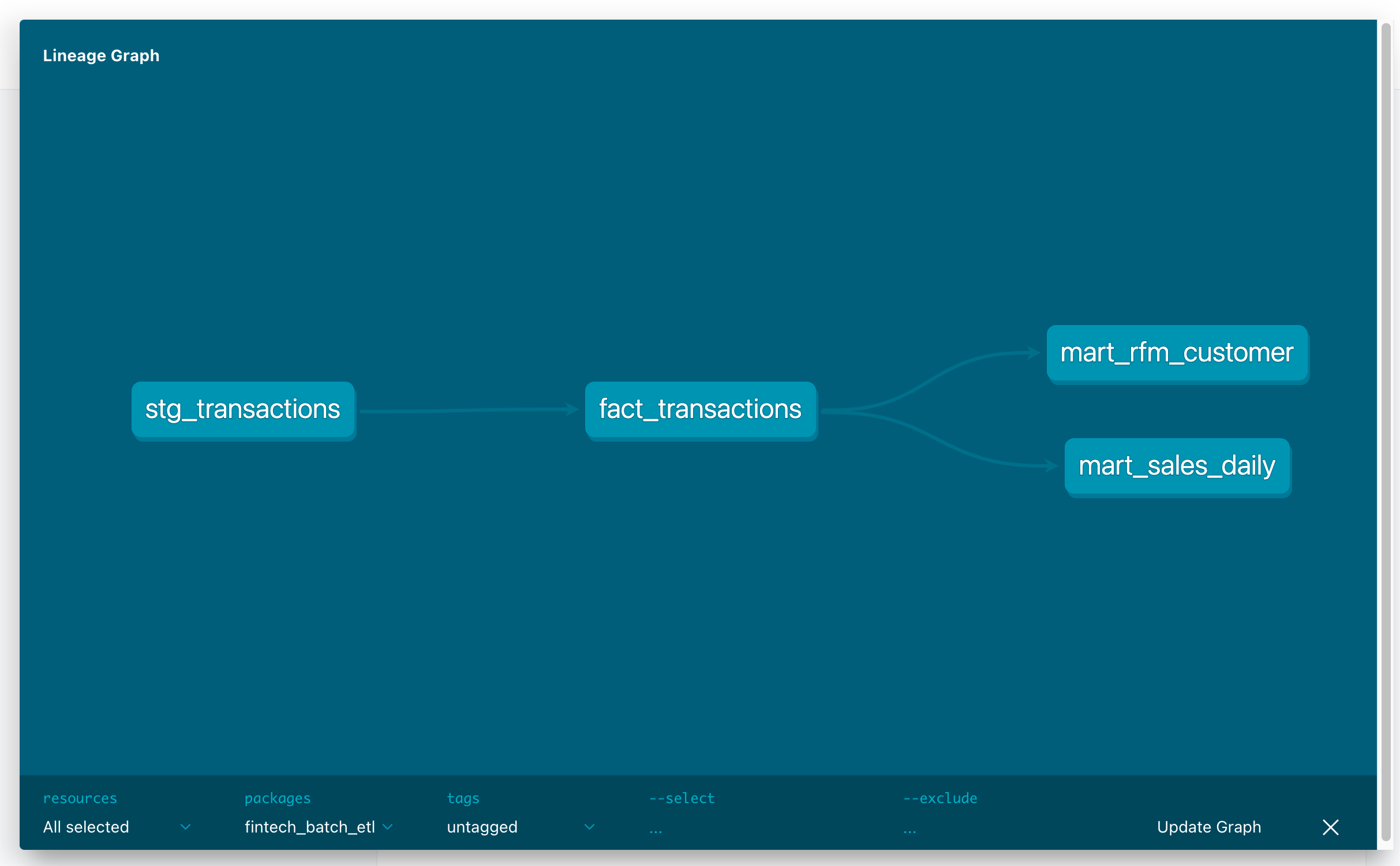
- Staging:
stg_transactionsfrom Parquet - Fact:
fact_transactions(clean, approved-only) - Marts:
mart_sales_daily: daily revenue & counts by categorymart_rfm_customer: recency, frequency, monetary scoring
I added dbt tests (unique keys, not null, accepted values) so data quality is enforced automatically.
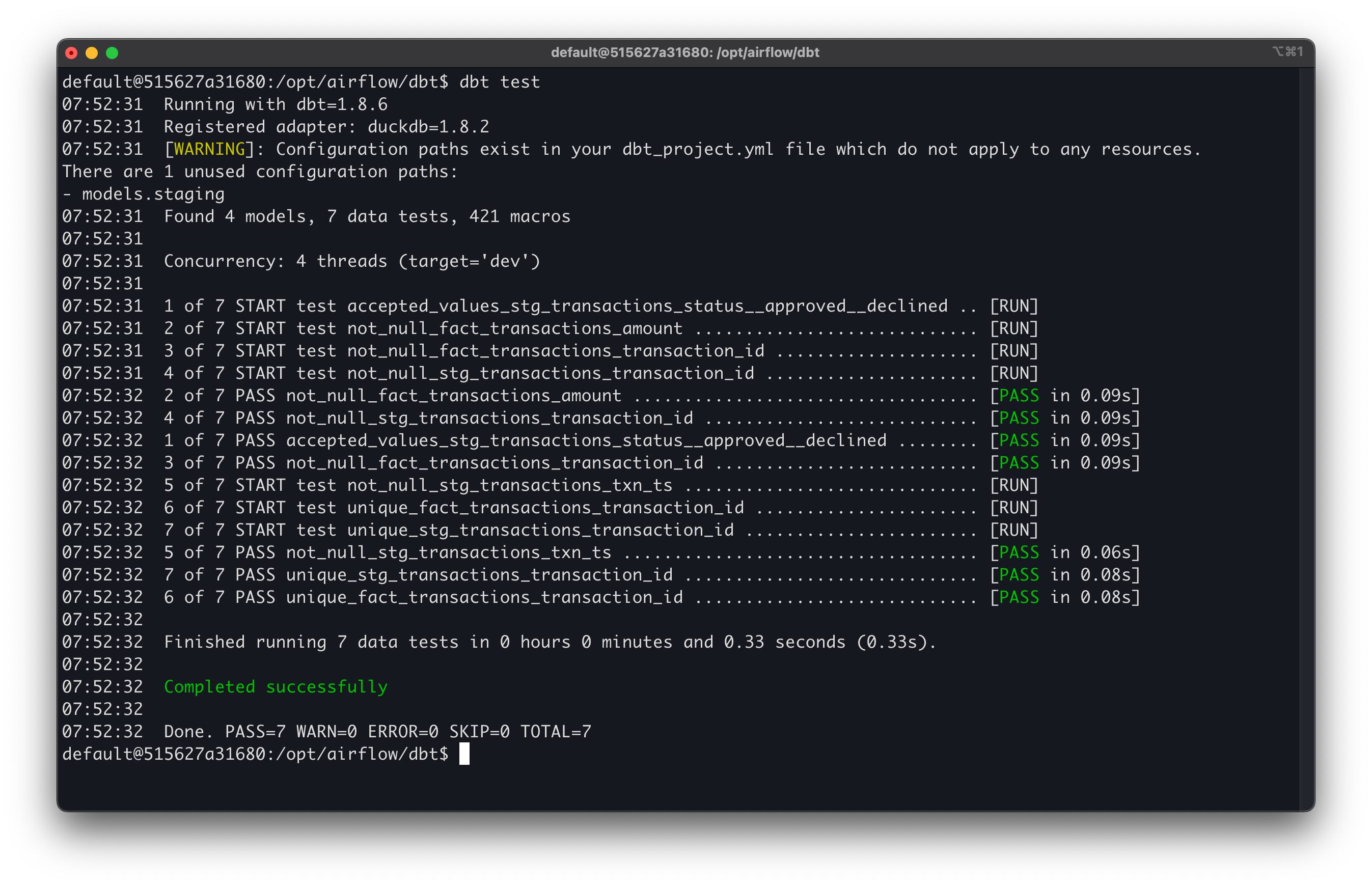
Example mart query (mart_sales_daily):
WITH base AS (
SELECT
CAST(strftime(txn_ts, '%Y-%m-%d') AS DATE) AS day,
mcc,
channel,
SUM(CASE WHEN is_refund THEN -amount ELSE amount END) AS gross_sales,
COUNT(*) AS txn_count
FROM {{ ref('fact_transactions') }}
GROUP BY 1,2,3
)
SELECT * FROM base
Sample output from mart_sales_daily (grain: day × MCC × channel) — designed to keep reporting flexible.

✅ Result: Business-friendly tables for daily sales trends and RFM cohorts — all reproducible in Docker with quality checks built in.
🏁 Wrapping Up (for Now)
With M0–M2 complete, I now have:
- ✅ Clean, deduplicated transaction data
- ✅ Automated daily ingestion with Airflow + backfills
- ✅ Business-ready marts (sales trends, RFM scores) with dbt tests
This alone already feels like a mini production pipeline — reproducible, automated, and analytics-friendly.
But there’s more to come. In the next post (M3–M4), I’ll take this local pipeline to the cloud, swapping DuckDB for AWS S3 + Redshift, adding governance, lineage, and dashboards — everything you’d expect in a real fintech data platform.
🎶 Level up to the cloud




